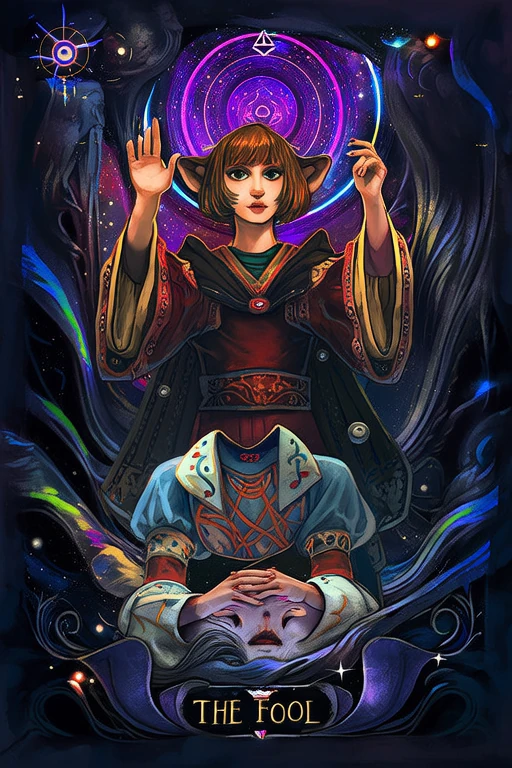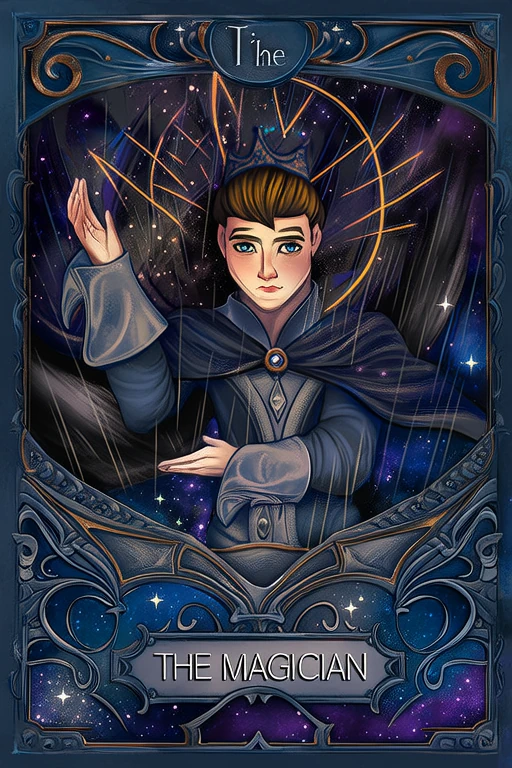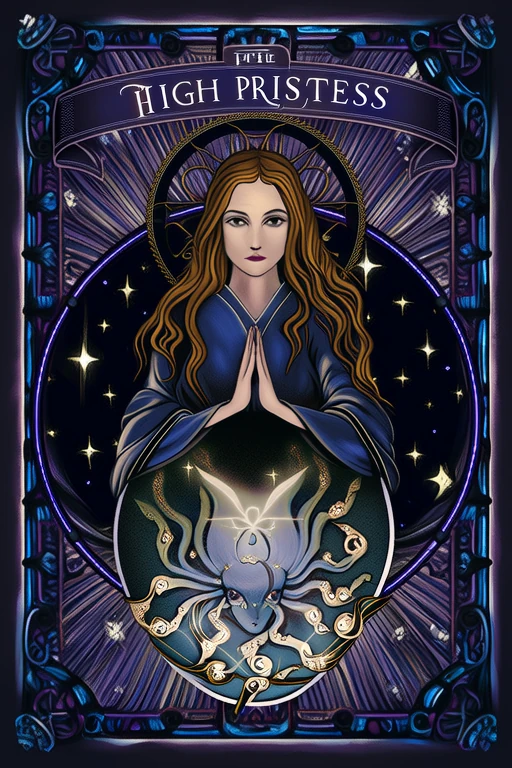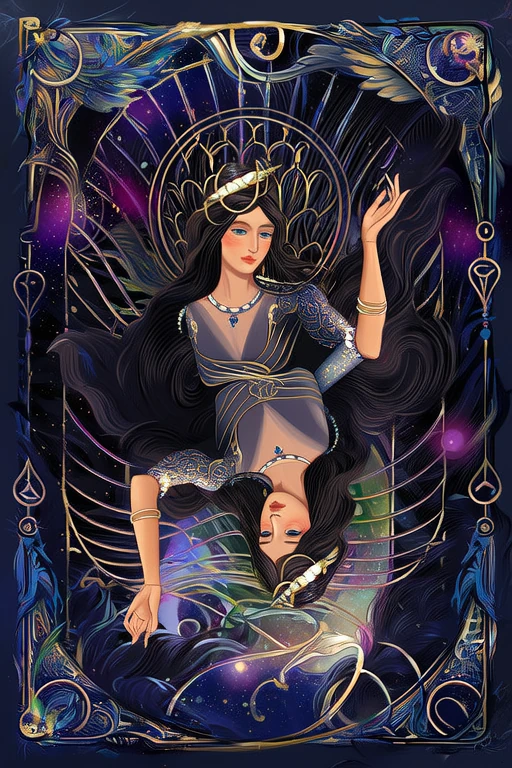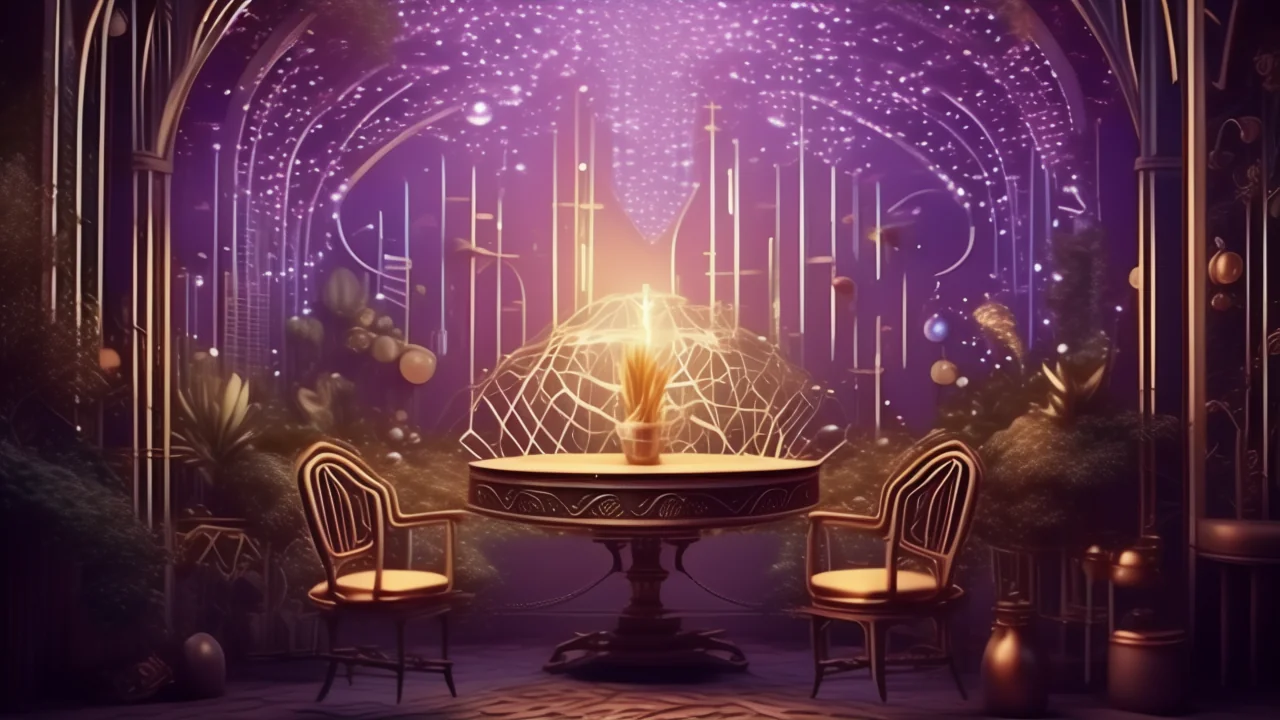
Justice
Discover the deep meaning of Justice with our free AI-powered tarot interpretation. Get instant, accurate readings based on advanced tarot knowledge.
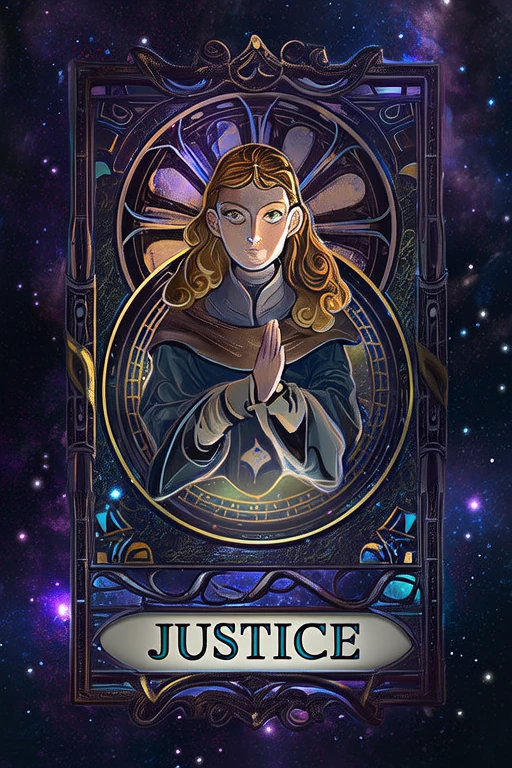
Keywords
Upright Meaning
Justice, fairness, truth, cause and effect, law
Reversed Meaning
Unfairness, lack of accountability, dishonesty
Full Interpretation
Justice represents fairness, truth, and the consequences of our actions.
In-Depth Analysis
📜 Historical Background
The tarot card 'Justice' (正义) holds a central place in the Major Arcana, typically numbered as VIII or XI depending on the deck tradition, and is a symbol of balance, fairness, and moral consequence. Its historical origins trace back to the 15th century, when tarot cards were first used in Europe not for divination, but as playing cards in games like Tarocchi in Italy and Tarot in France. The earliest known depictions of Justice appear in the Visconti-Sforza tarot deck, created around the mid-1400s for the ruling families of Milan. In these early decks, Justice was often portrayed as a regal woman holding a sword and scales, embodying the virtues of fairness and law.
As tarot evolved from a secular game to a tool for esoteric exploration in the 18th and 19th centuries, the imagery of Justice began to take on deeper symbolic meaning. French occultist Antoine Court de Gébelin proposed that the tarot was a remnant of ancient Egyptian wisdom, a theory that, while later debunked, helped to elevate the symbolic depth of the cards. Eliphas Lévi, a prominent French occultist, further developed the esoteric symbolism of Justice, linking it to the concept of divine equilibrium and karmic retribution.
Throughout the centuries, the visual representation of Justice has remained relatively consistent, yet variations exist across different tarot traditions. In the Rider-Waite-Smith (RWS) deck, created in 1909 by A.E. Waite and illustrated by Pamela Colman Smith, Justice is depicted as a serene woman seated between two pillars, holding a sword in one hand and balanced scales in the other. The pillars are often interpreted as representing the pillars of Solomon’s Temple or the dualities of life—law and mercy, action and thought.
In contrast, the Thoth Tarot, designed by Aleister Crowley and Lady Frieda Harris, presents a more abstract and mystical interpretation of Justice, titled 'Adjustment.' It features a figure holding a double-ended chain, symbolizing the dynamic nature of balance and the ever-changing scales of cosmic law. The Marseille tradition, one of the oldest and most influential in tarot, typically shows Justice with a crown, symbolizing the authority of law and divine justice.
Culturally, Justice resonates across various societies and mythologies. In Roman mythology, she is linked to Justitia, the goddess of justice, often depicted with scales and a sword—symbols that persist in modern legal iconography. In Greek mythology, Dike, the goddess of moral order and justice, serves a similar role. These mythological associations have helped solidify Justice's place not only in tarot but also in the collective human understanding of fairness and retribution.
Over time, the card has come to represent not just legal justice, but also personal accountability, truth, and the consequences of one’s actions. Whether in divination or spiritual practice, Justice continues to be a powerful symbol of equilibrium and moral clarity, reminding us of the importance of fairness and the inevitable balancing of energies in life.
Symbolism & Imagery
The symbolism of the Justice card is rich and layered, offering a deep well of meaning for those who seek to understand its significance in tarot readings. At its core, Justice represents balance, truth, and the law—both human and cosmic. The card’s imagery is intentionally designed to convey these themes through its visual elements, colors, and symbolic objects.
Most commonly, Justice is depicted as a regal woman seated or standing, often between two pillars. She holds a set of balanced scales in one hand and a sword in the other. The scales symbolize the weighing of evidence, decisions, and actions, emphasizing the importance of fairness and impartiality. The sword, often raised or pointing upward, represents the power of truth and the ability to cut through illusion or deception. Together, these tools suggest that Justice is not only about fairness but also about the ability to discern truth and act decisively.
The pillars behind Justice often represent the pillars of Solomon’s Temple or the duality of existence—law and mercy, reason and intuition, or the material and spiritual realms. They also signify structure and stability, reinforcing the idea that justice is built upon a firm foundation.
Colors play a crucial role in the symbolism of the Justice card. Blue is often used to represent truth, wisdom, and stability. Red may appear to symbolize passion, energy, or the will to act. Gold or yellow accents are sometimes included to denote enlightenment, divine guidance, or the illumination of truth. These color choices help to reinforce the card’s message of clarity, fairness, and higher wisdom.
Numerologically, Justice is most commonly numbered VIII or XI in the Major Arcana. In the Rider-Waite-Smith tradition, it is numbered VIII, aligning it with the eighth card and suggesting a midpoint in the journey of the Fool. In the Thoth tradition, it is numbered XI, which is associated with the concept of transformation and the breaking of illusions. The number eight is often seen as a symbol of balance, infinity, and karmic cycles, while eleven is considered a master number representing spiritual insight and higher purpose.
Across cultures, interpretations of Justice can vary. In Western esoteric traditions, the card is closely tied to the concept of karma—the idea that actions have consequences and that balance must be restored in the universe. In Eastern philosophies, particularly in Hinduism and Buddhism, this concept is echoed in the idea of dharma and the law of cause and effect.
When the Justice card appears upright in a reading, it often signals a time of decision-making, fairness, and the resolution of conflicts. It may indicate that the querent is being called to act with integrity, to weigh their options carefully, or to trust in the fairness of the universe. It can also represent legal matters, contracts, or situations where truth and objectivity are paramount.
Reversed, Justice may suggest imbalance, dishonesty, or the avoidance of responsibility. It can point to a situation where fairness is lacking or where decisions are being made without proper consideration. It may also warn of karmic repercussions or the need to face the consequences of past actions.
Justice is also connected to other cards in the Major Arcana, particularly Strength and the Chariot. These cards all deal with mastery—of self, of circumstances, and of moral choices. Together, they form a powerful triad of personal power, will, and ethical judgment.
Ultimately, the Justice card serves as a reminder that truth and balance are essential in all areas of life. Whether in personal relationships, career decisions, or spiritual growth, Justice encourages the querent to act with integrity and to trust in the natural order of things.
Psychological Insights
From a psychological perspective, the Justice card resonates deeply with Carl Jung’s concept of archetypes—universal symbols embedded in the collective unconscious. As an archetype, Justice embodies the principle of balance, moral responsibility, and the integration of opposites. She represents the inner judge, the part of the psyche that weighs decisions, discerns truth, and seeks fairness. In Jungian terms, Justice can be seen as an expression of the Self, the unified whole of the personality that seeks equilibrium between the conscious and unconscious mind.
Modern life is filled with complex decisions, ethical dilemmas, and the need for personal accountability—all areas where the energy of Justice becomes relevant. Whether navigating career choices, legal matters, or interpersonal conflicts, the presence of Justice in a reading often signals the need for objective evaluation and moral clarity. It encourages individuals to act with integrity, to consider the consequences of their actions, and to seek truth even when it is uncomfortable.
In decision-making, Justice serves as a guide to rational thought and ethical behavior. It reminds individuals to weigh all sides of a situation before making a choice, to consider both logic and intuition, and to avoid bias or emotional manipulation. This is particularly useful in high-stakes scenarios such as legal disputes, business negotiations, or personal crossroads where the outcome affects not only the individual but also others involved.
On a personal growth level, Justice invites self-reflection and the recognition of one’s own accountability. It asks individuals to examine their past actions, to take responsibility for their choices, and to understand the karmic nature of cause and effect. This self-awareness can be a powerful catalyst for transformation, encouraging individuals to align their lives with their highest values and to seek internal harmony.
Therapeutically, the Justice card can be a valuable tool in counseling and shadow work. It may appear when a client is struggling with guilt, indecision, or a need for closure. Therapists and counselors can use the card to help clients explore themes of fairness, justice, and personal responsibility. It can also be used in guided meditations or journaling exercises to help clients process past decisions and move toward resolution.
In modern spiritual practices, Justice is often invoked for clarity, truth, and protection. Many practitioners use the card in rituals related to legal matters, contracts, or ethical decisions. It is also associated with the concept of karma, reminding individuals that their actions have consequences and that the universe seeks balance. Some incorporate Justice into their daily affirmations or visualization practices to cultivate fairness, objectivity, and inner harmony.
Ultimately, the psychological and modern significance of Justice lies in its ability to guide individuals toward truth, balance, and ethical living. Whether in personal development, professional decision-making, or spiritual practice, Justice serves as a powerful reminder that fairness and integrity are essential components of a meaningful and balanced life.
Correspondences
The Justice card is richly connected to various esoteric and metaphysical correspondences that enhance its symbolic power and deepen its meaning in tarot readings. Astrologically, Justice is most commonly associated with Libra, the zodiac sign ruled by Venus. Libra embodies balance, fairness, and diplomacy—qualities that align perfectly with the themes of Justice. This planetary influence brings an emphasis on harmony, relationships, and the need to weigh decisions carefully. In some traditions, particularly within the Hermetic Order of the Golden Dawn, Justice is also linked to the element of Air, representing intellect, objectivity, and communication.
Gemstones and crystals associated with Justice include sapphire, amethyst, and clear quartz. Sapphire is known for its connection to wisdom, truth, and mental clarity, making it an ideal stone for legal matters and decision-making. Amethyst enhances spiritual insight and balance, helping individuals align with higher justice and ethical choices. Clear quartz amplifies energy and intention, making it a powerful tool for focusing on fairness and truth.
Herbs and essential oils linked to Justice include lavender, frankincense, and sage. Lavender promotes peace, clarity, and emotional balance—perfect for meditations or rituals involving fairness and resolution. Frankincense is often used in spiritual and legal contexts for purification and divine guidance. Sage is associated with cleansing and truth, helping to remove obstacles that cloud judgment.
Seasonally, Justice resonates with the autumn equinox, a time of balance between light and dark, symbolizing the card’s themes of equilibrium and transition. Temporally, it is often associated with noon, when the sun is at its highest point, representing clarity, truth, and the full illumination of circumstances.
In terms of chakra energy, Justice is connected to the throat chakra (Vishuddha), which governs communication, truth, and self-expression. This connection reinforces the card’s role in speaking one’s truth, making clear decisions, and advocating for fairness.
Numerologically, Justice is most commonly numbered VIII or XI, depending on the tarot tradition. The number eight is associated with balance, karmic cycles, and material manifestation, reinforcing the card’s themes of cause and effect. The number eleven, considered a master number, signifies spiritual insight, transformation, and higher purpose.
These correspondences provide a deeper energetic and symbolic framework for understanding and working with the Justice card in both tarot readings and spiritual practices.
❓ Frequently Asked Questions
The Justice card often raises a variety of questions among both novice and experienced tarot readers due to its profound symbolism and multifaceted meanings. Here are some of the most frequently asked questions and insights into how to interpret and work with this powerful card in readings.
**1. What does the Justice card mean in a love reading?** In a love context, Justice often indicates fairness, truth, and the need for honest communication. Upright, it may suggest that a relationship is entering a phase of balance and mutual respect. It can also point to the resolution of conflicts or the need to make a decision based on integrity. Reversed, Justice may warn of dishonesty, imbalance, or unresolved issues that require attention.
**2. What does Justice mean in a career or financial reading?** Upright, Justice in a career or financial reading often signals fair compensation, legal clarity, or the resolution of workplace disputes. It may also indicate that a decision will be made impartially, such as a promotion, contract signing, or business agreement. Reversed, it could suggest injustice, financial imbalance, or unethical behavior that needs to be addressed.
**3. Is Justice a 'yes' or 'no' card in tarot?** Justice is not typically a straightforward yes or no card. Instead, it emphasizes the need for balance, truth, and careful evaluation. If a question requires a yes or no answer, Justice may indicate that the situation is not yet clear or that the correct answer will become apparent through reflection and fairness.
**4. What are common misconceptions about the Justice card?** One of the most common misconceptions is that Justice always represents legal proceedings or punishment. While it can indicate legal matters, its deeper meaning is about balance, truth, and personal responsibility. Another misconception is that reversed Justice always means guilt or wrongdoing, when in fact it may simply suggest imbalance or the need for self-reflection.
**5. What spreads work well with the Justice card?** Justice is particularly effective in spreads that require decision-making, moral evaluation, or the resolution of conflict. The Three-Card Spread (Past, Present, Future) or the Celtic Cross can help explore the themes of balance and fairness in depth. A dedicated Justice spread might include positions such as: What is the truth of the situation? What needs to be weighed? What action should be taken? What is the outcome?
**6. How does Justice interact with other cards?** Justice works well with cards that emphasize truth, structure, and moral clarity. When paired with Strength, it suggests the need for courage and compassion in decision-making. With the Chariot, it indicates the power of will aligned with justice. When combined with the Devil, it may warn of imbalance or the consequences of unethical choices. In contrast, Justice and the Lovers may highlight the importance of truth in relationships.
**7. How can I use Justice in personal growth or spiritual practice?** Justice can be used in meditation to help clarify decisions, seek truth, or restore inner balance. Affirmations such as 'I act with integrity and fairness' or 'I trust in the balance of the universe' can help integrate the card’s energy. Journaling prompts might include: 'What decision do I need to evaluate more objectively?' or 'How can I bring more fairness into my life?'
By understanding these nuances and applications, readers can more effectively harness the power of the Justice card in both personal and professional readings.
Practical Readings
Love Reading – Free • Online • AI • Instant • Accurate
In love, Justice upright: Justice, fairness, truth, cause and effect, law. Reversed: Unfairness, lack of accountability, dishonesty.
Career Reading – Free • Online • AI • Instant • Accurate
For career, Justice upright: Justice, fairness, truth, cause and effect, law. Reversed: Unfairness, lack of accountability, dishonesty.
Yes‑No Reading – Free • Online • AI • Instant • Accurate
As a quick yes‑no: upright tends toward “yes”, reversed leans “no”—interpret within your question’s context.
FAQ
What does Justice mean in tarot?
Justice represents justice, fairness, truth, cause and effect, law. This card encourages Justice represents fairness, truth, and the consequences of our actions.
What is Justice reversed meaning?
When Justice appears reversed, it signifies unfairness, lack of accountability, dishonesty. Consider areas that may require adjustment or release.
Is Justice a positive card?
Justice is generally considered a neutral to positive card, representing justice, fairness, truth, cause and effect, law.
What should I do if I draw Justice?
If you draw Justice, focus on cause and effect, clarity, truth. Align actions with the card’s upright energy.
How do I interpret Justice in a love reading?
In love readings, Justice suggests justice, fairness, truth, cause and effect, law in relationships. Consider how cause and effect and clarity apply to your situation.
What does Justice mean in a love reading?
In love, Justice points to justice, fairness, truth, cause and effect, law when upright and unfairness, lack of accountability, dishonesty reversed. Reflect on relational balance & authenticity.
How is Justice interpreted in career?
For career, Justice upright highlights justice, fairness, truth, cause and effect, law while reversed warns of unfairness, lack of accountability, dishonesty—adjust planning & execution.
What is the financial meaning of Justice?
Financially, Justice suggests justice, fairness, truth, cause and effect, law potential; reversed indicates unfairness, lack of accountability, dishonesty—use prudent pacing.
Is Justice a yes or no card?
Justice is generally a context-dependent when upright; reversed leans toward hesitation or NO—apply to the nuance of your question.
References
References
- Encyclopaedia Britannica – Tarot
Historical overview and cultural context of tarot cards.
- Wikipedia – Tarot
General reference on tarot history, structure, and usage.
- Biddy Tarot – Tarot Card Meanings
Widely cited interpretations and learning resources.
- Labyrinthos – Tarot Card Meanings
Educational articles on major and minor arcana.
